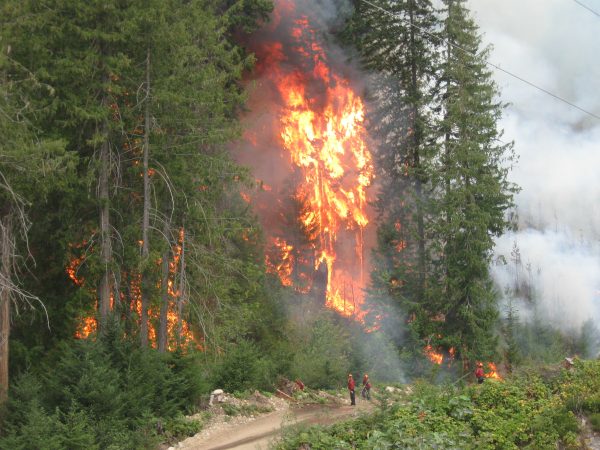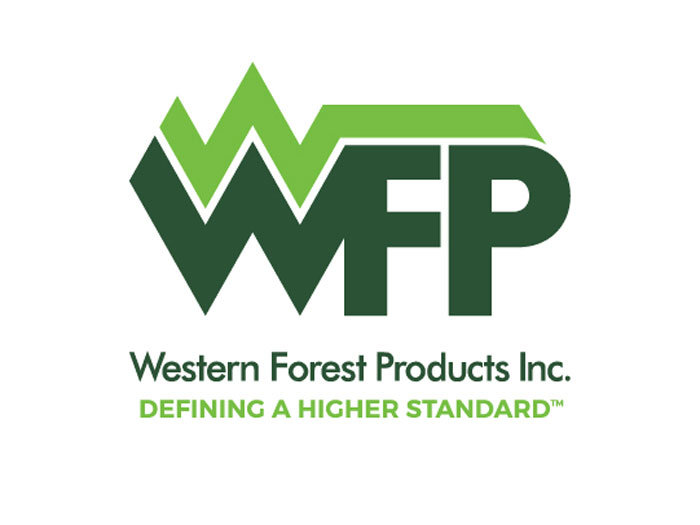We have all heard of the negative impacts of wildfires more often than we used to. Climate change continues to play a big role in increasing the severity, frequency, and destructive impact of wildfires on communities, wildlife habitats, and parks.
FPInnovations’ Wildfire Operations Research Program has been developing, delivering, and validating innovative solutions and technologies through independent operational research in order to protect communities, manage wildfires, and reduce negative impact of unwanted wildfires.
Community resilience and fuel management
Community resilience is the ability to prepare for, adapt to, and quickly recover from disasters such as wildfires.
One of the primary tools to protect communities from catastrophic losses and mitigate the threat of wildfire is fuel management, which is the modification of a forest structure to reduce forest fuel accumulations available in a wildfire.
According to the Canadian Climate Institute, one of the recommendations of the review of the Fort McMurray fire was the need to increase emphasis on reducing home vulnerability. At the homeowner and community level, this can be achieved by following vegetation management guidelines recommended by FireSmart Canada and FireSmart BC.
Beyond the homeowner and community vegetation management initiatives, fuel reduction treatments are often conducted in areas of wildland fuels that are adjacent to or intermixed with homes or other infrastructures. These larger fuel reduction treatments are typically planned by fuel management professionals and executed by contractors using specialized motorized hand tools or machinery.
Fuel management techniques for resilient forests

Photo: FPInnovations.
Fuel treatments apply basic fuel reduction principles to reduce the potential for crown fire and to create a more resilient forest. Thinning forest stands with reduction in surface fuel load and removal of ladder fuels are common practices that are used to reduce the potential for crown fire initiation.
FPInnovations has collaborated with wildfire management and other research agencies to establish research sites and conduct experimental burns to evaluate the effectiveness of the various forest fuel treatments, including at the Fort Providence Wildfire Experimental Site, to test the effectiveness of stand thinning, stand cleaning, and mulching fuel treatments. Other experimental burns at Red Earth Creek and the Pelican Mountain Fire Smart Fuel Management Research site have evaluated the effectiveness of mulching and stand thinning in black spruce forest stands. The fuel reduction treatments evaluated at these sites are designed for application at a forest stand level in the wildland-urban interface using hand tools or small machinery.
A virtual tour for the Fort Providence and Pelican Mountain sites has been created to showcase past, current and future research projects and scientific results using various media such as 3D models, 360-degree photos, in-fire video, and scientific reports or InfoNotes for an immersive experience for the user.
Application of fuel reduction principles to achieve more resilient forests at the landscape level can be achieved through innovative timber harvest and debris management operations that retain a drought and fire-resilient overstory with a reduced fuel loading in the surface fuel layer.
Forest management techniques
To evaluate innovative harvesting and debris management techniques as tools to mitigate wildfire, FPInnovations collaborated with Forest Enhancement Society of British Columbia for a research project evaluating a retention harvest operation in a Kootenay Mix forest environment designed as a wildfire risk reduction adjacent to the community of Nelson, B.C.
A selective harvest operation near Quesnel, B.C., using innovative residue salvage techniques was applied in central B.C., in mature Douglas-fir, and FPInnovations’ researchers documented productivity of the operations and the change in forest stand structure and fuel loading.
Controlled fires ≠ Wildfires
Using fire as a fuel management tool
Prescribed burning is the planned and controlled application of fire to a treatment area to achieve multiple resource management objectives including ecosystem restoration, habitat enhancement, silvicultural site preparation and disease eradication.
Traditional cultural burning has been practiced by indigenous peoples for thousands of years “based on multiple values … berry production… animal population… disease, grasslands, diseased trees,” says sxʷuxʷiyaʔ, Penticton Indian Band’s project manager for traditional burns. Cultural burning practices have been critical to ecosystem management and wildfire mitigation.
Prescribed burning is a cost-effective fuel reduction technique typically applied in the surface fuel layer (litter, woody debris, grasses, and flammable shrubs) and understory layer.
FPInnovations has conducted a series of underburning operations in a Jack pine fuel environment at the Fort Providence Wildfire Experimental site to reduce the loading of fine fuels (litter, woody debris) in the surface fuel litter layer. The research objective for this project is to determine optimum conditions (weather and fuel moisture) to achieve the desired fuel consumption objectives without the threat of fire spread to the crown fuel layer and escaped fire resulting from firebrand generation and spot fire development.
Steven Hvenegaard and Greg Baxter are senior researchers for FPInnovations’ Wildfire Operations Research Program.
